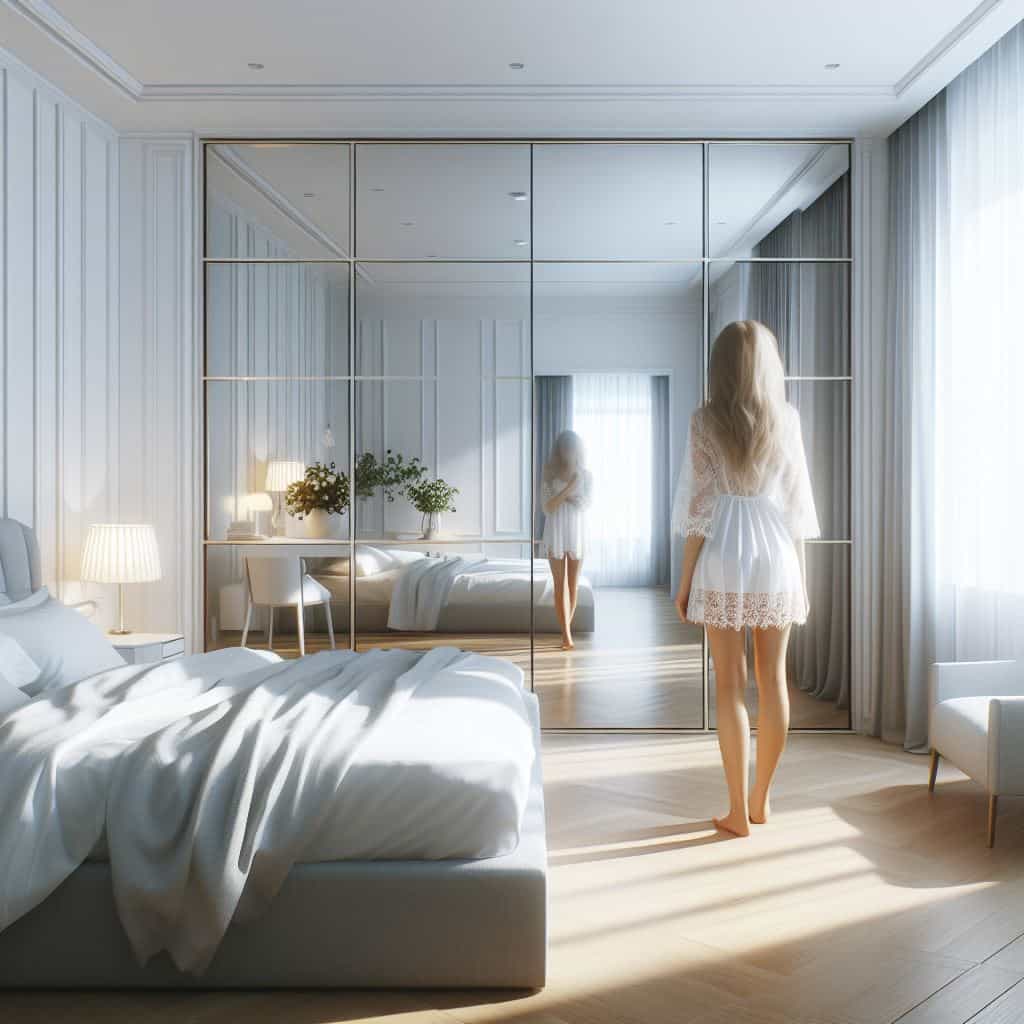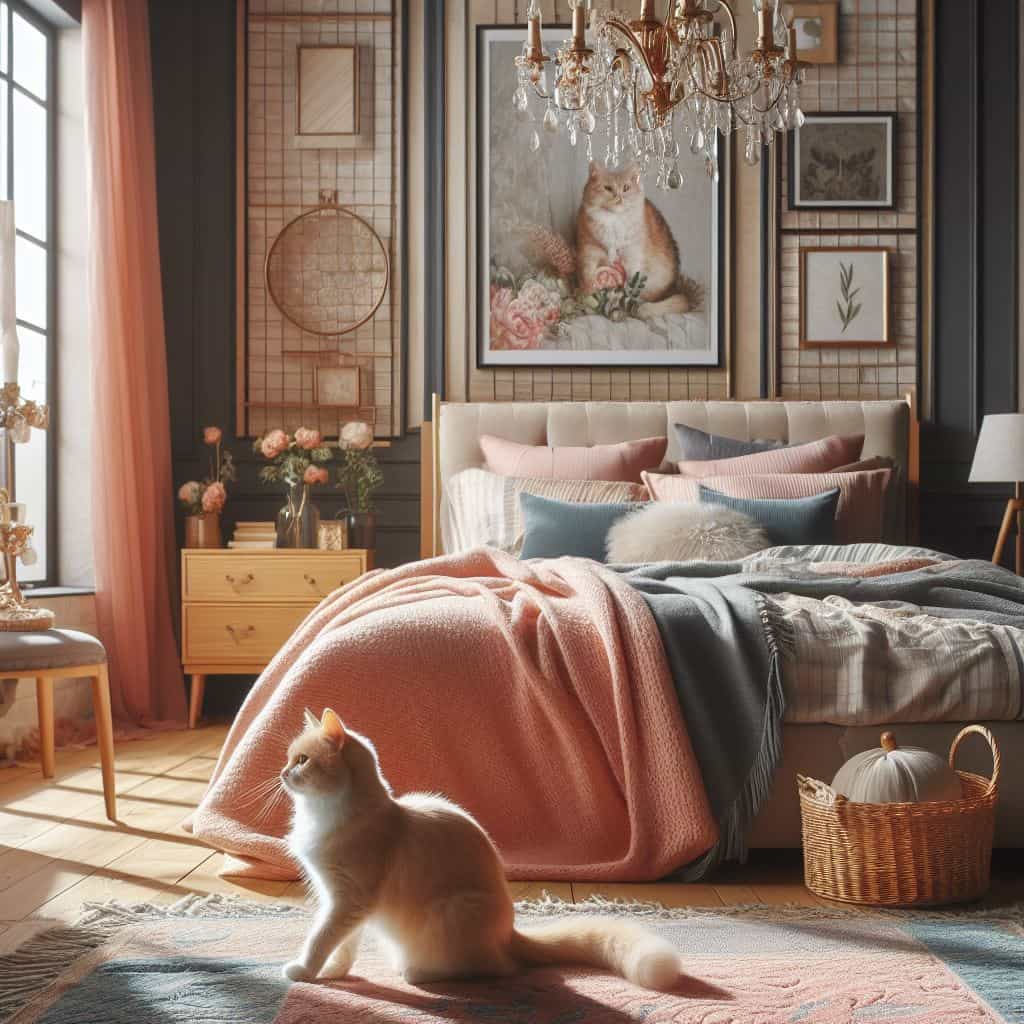The bedroom serves as a sanctuary where we spend a significant portion of our time resting and rejuvenating. Proper organization of this space is crucial to promoting comfort, tranquility, and quality sleep. In this article, we'll delve into the fundamental principles of arranging the bed, wardrobes, and nightstands in the bedroom.
Bed Placement
The bed serves as the focal point of the bedroom, around which the rest of the space is organized. Optimal bed placement is essential for comfort and functionality. Firstly, choose a location for the bed that allows ample space for movement around it and convenient access from all sides. Secondly, consider the positioning of windows and doors to avoid drafts and ensure proper ventilation. In larger bedrooms, the bed can be placed centrally, imparting a sense of luxury and spaciousness, while in smaller spaces, positioning it against a wall can optimize space utilization.
Correct Bed Placement Options:
- Relative to the Door: Position the bed so you can see the entrance to the room, preferably diagonally across from it, in a remote corner to avoid direct light and noise from adjoining rooms.
- Relative to the Window: Strive to place the bed away from the window to minimize drafts and excessive lighting. If unavoidable, use heavy curtains for protection.
- Relative to the Wall: For a double bed, place it against the wall at the head to allow access from both sides. For a single bed, positioning it parallel to the wall enhances coziness and security.
Incorrect Bed Placement Options:
- By the Door: Avoid placing the bed directly opposite the door, as it may lead to discomfort due to bright light and noise intrusion, along with negative energy flow, according to feng shui principles.
- Headboard Facing the Window: Similarly, avoid positioning the headboard towards the window to mitigate negative effects from lighting, noise, and potential drafts, as per feng shui recommendations.
- Parallel to the Window: This arrangement may also result in adverse effects such as drafts, noise, and excessive lighting.
Bed Near the Window
Should you choose to place the bed near the window, consider both the advantages and disadvantages. Natural lighting can create a pleasant ambiance, while a scenic view adds aesthetic appeal. However, inadequate window treatments may lead to unwanted brightness and privacy concerns. Moreover, drafts and cold temperatures during winter necessitate proper insulation and suitable bedding.
In conclusion, the decision to position the bed near the window depends on personal preferences and room conditions. Carefully weigh the pros and cons to make a choice that best aligns with your needs and preferences.
Bed Placement in the Center of the Room
Positioning the bed in the center of the bedroom is a rather unconventional and bold decision that can lend a special character and style to the space. However, before making this choice, it's essential to consider several factors:
Pros:
- Aesthetics and Style: Placing the bed in the center of the room can give the interior an unusual and stylish appearance. This can be particularly effective in large bedrooms, where it helps create a sense of luxury and expansiveness.
- Accessibility: A bed positioned in the middle of the room provides uniform access to all sides, making cleaning and changing bedding more convenient.
- Optimal Space Utilization: This arrangement can free up walls and central space, allowing for other purposes such as furniture placement or creating a relaxation area.
Cons:
- Lack of Privacy: A bed in the center of the room may create a sense of insufficient privacy, especially if the room has open access from other areas or if windows are directly opposite the bed.
- Limited Furniture Placement Options: This positioning may limit opportunities for placing other furniture in the room, especially if the space is not very large to begin with.
- Compromised Space Organization: Organizing storage may become more challenging as there are no walls to attach wardrobes or nightstands.
Placing the bed in the center of the room is an option more suitable for those seeking an unusual and daring interior design solution. It can be successfully implemented in large bedrooms with good planning and consideration of all the pros and cons of this configuration. Ultimately, the choice depends on the individual preferences and taste of the bedroom's owner.
Which Direction Should the Bed Head Face?
The choice of direction in which the head of the bed will be placed can impact your well-being and sleep quality, although this depends on various factors including geographical location, climate conditions, cultural preferences, and personal inclinations. Here are several considerations to keep in mind:
East or West Direction:
- East: Some cultures and philosophies like feng shui or Ayurveda recommend sleeping with the head facing east, as it's believed to be more harmonious and connected with the energy of dawn, potentially leading to fresher and more energetic awakenings. Sleeping facing east is also associated with longevity in many cultures.
- West: In some cultures, placing the bed with the head facing west may evoke a sense of coziness and tranquility, especially if you enjoy watching sunsets or if your windows face this direction.
North or South Direction:
- North: Some studies suggest that bedrooms oriented towards the north may be cooler and quieter, promoting deep sleep. However, depending on the climate, this may also pose issues with lack of natural light.
- South: Bedrooms facing south typically receive more sunlight, which can be pleasant on cold winter days but may lead to overheating in hot weather. However, it's also believed that sunlight can be more invigorating and support wakefulness.
It's important to remember that each individual is unique, and what works for one person may not suit another. The best way to determine the optimal direction for your bed is to experiment and listen to your feelings and needs.
How Your Cat Can Help You Find the Best Sleeping Spot
Your cat can be a great assistant in determining the optimal location for your bed in the bedroom! Cats typically prefer to sleep and relax in cozy and comfortable spots, so their behavior can give you a hint about where the best place for your bed might be. Here are a few ways your cat can help you figure out the optimal bed placement:
- Observing Your Cat's Behavior: Watch where your cat prefers to sleep or rest in your bedroom. If it frequently chooses a particular spot, that could be a good indicator of comfort and coziness in that area.
- Listening to Your Cat's Opinion: Your cat may show its preferences simply by being in different parts of the bedroom. If it spends a lot of time in a specific area, it could be a sign that it likes that spot.
- Using Your Cat's Instinct: Cats instinctively gravitate towards places where they feel safe and secure. If your cat often chooses a spot by the wall or in a corner, it could be a sign of a good bed location where you'll also feel comfortable and snug.
- Reacting to Changes: If you move the bed or renovate the bedroom, pay attention to your cat's reaction. If it starts spending more time in a new spot, it could indicate that it's a good place for the bed.
Remember that the decision about where to place your bed in your bedroom should take into account not only your cat's preferences but also your own needs and preferences. Nevertheless, your cat can be an excellent indicator of comfort and convenience in different parts of the room.
Wardrobes
Wardrobes are an essential part of the bedroom where we store clothes, bedding, and other items. When choosing a location for wardrobes, it's important to consider accessibility and ease of use. If possible, it's recommended to place wardrobes near the bed or close to the entrance of the bedroom to ensure quick access to items. Built-in wardrobes are an excellent solution for saving space and creating an aesthetically pleasing interior. Additionally, it's important to provide an adequate number of shelves, drawers, and hangers for convenient storage of various items.
Bedside Tables
Bedside tables are functional elements of the bedroom that provide convenience for storing and accessing essential items. They can be installed on either side of the bed and serve as a place for night lamps, books, glasses, alarm clocks, and other small items. When choosing bedside tables, pay attention to their height to ensure they correspond to the level of the bed, and consider the number of drawers or shelves based on your needs.
Visual Design
In addition to functionality, it's important to pay attention to the visual design of the bedroom. Use harmonious color combinations and textile materials to create a cozy and relaxing atmosphere. Decorative elements such as paintings, mirrors, and candles can add charm and personality to your interior. Also, remember about lighting accents - good lighting contributes to creating a cozy atmosphere and visually enlarges the space.
In conclusion, organizing space in the bedroom is an important aspect of creating a comfortable and cozy living environment. Rational distribution of the bed, wardrobes, and bedside tables will help you maximize the efficient use of available space and create a cozy atmosphere for rest and relaxation. By following the principles of functionality and design, you can create the bedroom of your dreams where every element contributes to your comfort and satisfaction.






